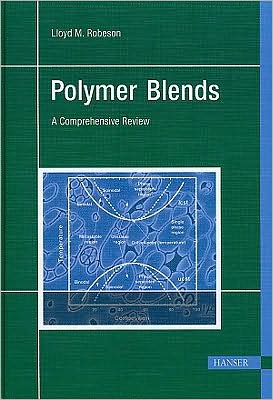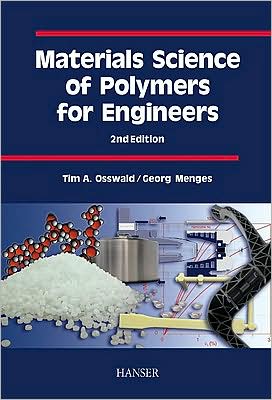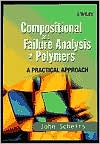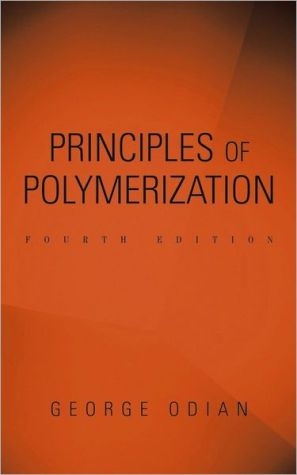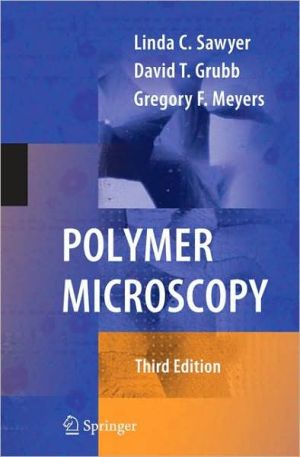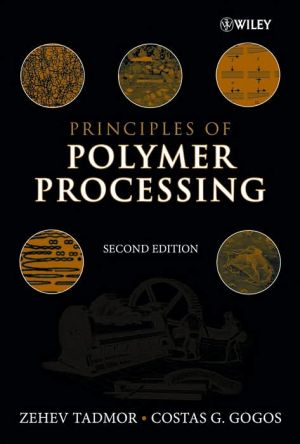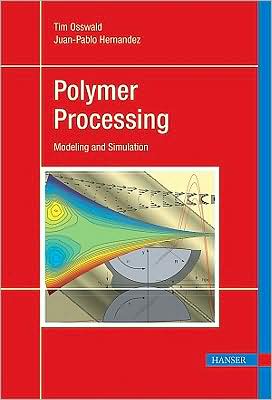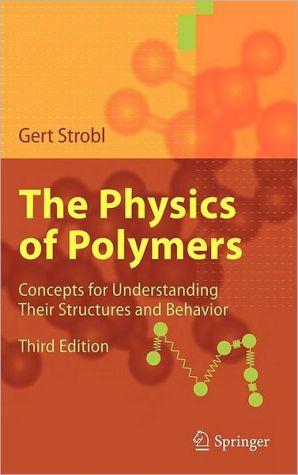Polymer Blends: An Introduction
It has been well-recognized that polymer blends offer a key option in solving emerging application requirements. The ability to combine existing polymers into new compositions with commercializable properties offers the advantage of reduced research and development expense compared to the development of new monomers and polymers to yield a similar property profile. An additional advantage is the much lower capital expense involved with scale-up and commercialization. Another specific...
Search in google:
It has been well-recognized that polymer blends offer a key option in solving emerging application requirements. The ability to combine existing polymers into new compositions with commercializable properties offers the advantage of reduced research and development expense compared to the development of new monomers and polymers to yield a similar property profile. An additional advantage is the much lower capital expense involved with scale-up and commercialization. Another specific advantage of polymer blends versus new monomer/polymer compositions is that blends often offer property profile combinations not easily obtained with new polymeric structures. In the rapidly emerging technology landscape, polymer blend technology can quickly respond to developing needs.This book offers a comprehensive overview of this important field, in particular a unique and extensive literature research on all aspects of this technology. It can be utilized as a reference text as well as a textbook for a graduate level course on polymer blends.Contents:Fundamentals of Polymer BlendsCompatibilization Methods for Polymer BlendsTypes of Polymer BlendsCharacterization of Polymer BlendsProperties of Polymer BlendsCommercial Applications of Polymer BlendsFuture Perspectives in Polymer Blends
1 Introduction 11.1 General Overview 11.2 Historical Review 31.3 Overview of the Book 51.4 Definitions 62 Fundamentals of Polymer Blends 112.1 Thermodynamic Relationships 112.1.1 Combinatorial Entropy of Mixing 142.1.2 Enthalpy of Mixing 162.1.3 Flory-Huggins Theory 172.1.4 Equation of State Theories 192.2 Phase Behavior 242.2.1 Miscible versus Immiscible Blends 242.2.2 Spinodal Decomposition and Nucleation and Growth 272.3 Solubility Parameter Concepts 302.4 Specific Interactions 352.4.1 Hydrogen Bonding Interactions 352.4.2 Dipole-Dipole Interactions 402.4.3 Ion-Dipole and Ion-Ion Interactions 412.4.4 Additional Specific Interactions 422.5 Mean Field Theory and Intramolecular Repulsion Concepts 422.6 Association Model 482.7 Interfacial Aspects 492.8 Additional Methods of Predicting Polymer Phase Behavior 543 Compatibilization Methods 653.1 Introduction of Specific Interacting Groups 663.2 In-Situ Polymerization Compatibilization 673.3 Ternary Polymer Addition (Nonreactive) 703.4 Reactive Compatibilization 733.4.1 Reactive Extrusion Compatibilization (Single Pass Extrusion) 813.5 Interpenetrating Polymer Networks 843.6 Crosslinking between Phases 873.7 Block Copolymer Addition 883.8 Polymer-Polymer Reactions 923.9 Additional Methods of Compatibilization 964 Types of Polymer Blends 1094.1 Methods of Blend Preparation/Processing 1094.2 Elastomer Blends 1124.3 Elastomer (Low T)g-High Modulus (High Tg) Impact Modified Polymer Blends 1184.4 Polymer Blends Containing Crystalline Polymers 1244.4.1 Crystalline Polymer-Amorphous Polymer Blends 1244.4.2 Crystalline-CrystallinePolymer Blends 1304.4.3 Isomorphic Polymer Blends 1354.5 Polyolefin Blends 1374.6 Engineering Polymer Blends 1414.6.1 Poly(Phenylene Oxide) Based Blends 1414.6.2 Aromatic Polycarbonate Based Blends 1444.6.3 Polyarylate Based Blends 1474.6.4 Poly(Aryl Ether Ketone) Based Blends 1484.6.5 Aromatic Polysulfone Based Blends 1504.6.6 Polyamide Based Blends 1504.6.7 Polyimide Based Polymer Blends 1514.6.8 Poly(Phenylene Sulfide) Based Blends 1534.6.9 Miscellaneous Engineering Polymer Blends 1534.7 Emulsion Blends 1544.8 Liquid Crystalline Polymer Blends and Molecular Composites 1594.8.1 Liquid Crystalline Polymer Blends 1594.8.2 Molecular Composites 1644.9 Polymer Blends Containing Block Copolymers 1664.10 Blends Based on Polystyrene and Styrene Copolymers 1724.11 Blends Based on PMMA and (Meth)Acrylate Copolymers 1794.12 Blends Based on PVC 1824.13 Blends Involving Thermosetting Polymers 1874.14 Water Soluble Polymer Blends/Polyelectrolyte Complexes 1914.15 Biodegradable and Natural Polymer Based Blends 1984.15.1 Biodegradable Polymer Blends 1984.15.2 Natural Polymer Blends 2004.16 Miscellaneous Blends 2024.16.1 Recycled Polymer Blends 2024.16.2 Conductive Polymer Blends 2044.16.3 Ternary Polymer Blends 2074.16.4 Miscellaneous Polymer Blends 2094.17 Polymer Blend Composites 2105 Characterization of Polymer Blends 2535.1 Glass Transition 2535.2 Dynamic Mechanical Characterization 2575.3 Calorimetric Methods 2625.4 Dielectric Characterization 2665.5 Morphology/Microscopy 2715.5.1 Optical Microscopy 2715.5.2 Transmission Electron Microscopy (TEM) 2735.5.3 Scanning Electron Microscopy (SEM) 2765.5.4 Atomic Force Microscopy (AFM) 2785.5.5 Scanning Tunneling Microscopy 2805.5.6 X-Ray Microscopy 2805.6 Scattering Methods: Light, X-Ray, Neutron 2805.6.1 Light Scattering 2825.6.2 X-Ray Scattering 2845.6.3 Neutron Scattering 2865.6.4 Neutron Reflectivity 2895.6.5 Neutron Spin Echo Spectroscopy 2895.6.6 Other Scattering Methods 2895.7 Nuclear Magnetic Resonance 2905.8 Spectroscopic Methods 2965.8.1 Infrared Spectroscopy 2965.8.2 UV-Visible Spectroscopy 3015.8.3 Raman Spectroscopy 3015.8.4 Fluorescence Spectroscopy: Non-Radiative Energy Transfer and Excimer Fluorescence 3025.8.5 X-Ray Photoelectron Spectroscopy and Secondary Ion Mass Spectroscopy 3055.9 Vapor Sorption and Solvent Probe Techniques 3075.10 Positron Annihilation Spectroscopy 3105.11 Characterization of Interfacial Properties 3125.12 Miscellaneous Characterization Techniques 3156 Properties of Polymer Blends 3336.1 Mechanical Properties 3336.2 Thermal Properties 3516.2.1 Crystallinity 3516.2.2 Thermal Stability 3586.3 Transport Properties 3586.3.1 Diffusion and Permeability of Gases 3586.3.2 Transport in Miscible Blends 3596.3.3 Transport in Phase Separated Blends 3606.3.4 Thermal Conductivity 3646.4 Electrical Properties 3646.5 Rheology and Processing of Polymer Blends 3676.5.1 Rheology of Phase Separated Blends 3707 Commercial Applications of Polymer Blends 3857.1 Commercial Elastomer Blends 3857.2 Commercial Polyolefin Blends 3887.3 Commercial Engineering Polymer Blends 3907.4 Impact Modified Blends 3977.5 PVC Commercial Blends 3997.6 Commercial Polymer Blends Comprising Styrenic Polymers 4007.7 Commercial Polymer Blends Based on Acrylate Containing Polymers 4017.8 Commercial Applications of Emulsion Blends 4017.9 Miscellaneous Commercial Blends 4037.10 Miscellaneous Patent Examples Suggesting Commercial Potential 4068 Emerging Technology Involving Polymer Blends 4158.1 Nanotechnology 4158.1.1 Polymer/Polymer/Nanoparticle Composites 4168.2 Electronics/Optoelectronics 4178.2.1 Photovoltaic Applications 4188.2.2 Light Emitting Diode Applications 4208.2.3 Electrochromic Applications 4218.2.4 Additional Electronics Applications 4228.3 Electrically Conductive Polymers and Blends 4238.4 Application of Supercritical Fluids in Polymer Blends 4258.5 Lithium Battery Applications 4268.6 Fuel Cell Materials Opportunities 4288.7 Biomaterials/Biotechnology 4308.8 Miscellaneous Applications of Polymer Blend Technology in Emerging Technologies 433Appendix 439Appendix 1 439Appendix 2 444Appendix 3 445Index 451
